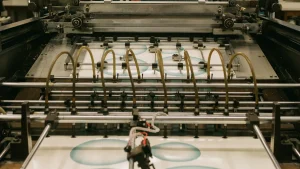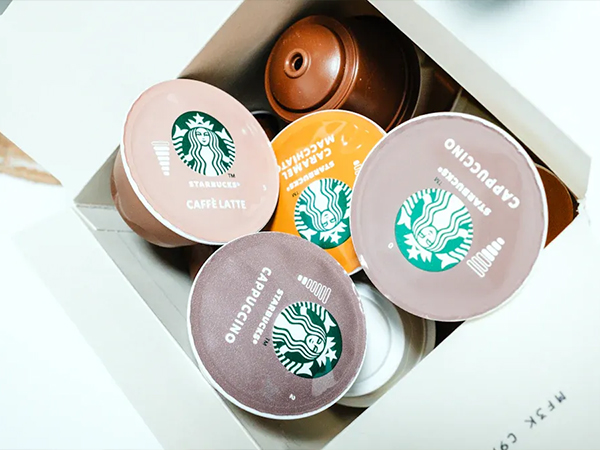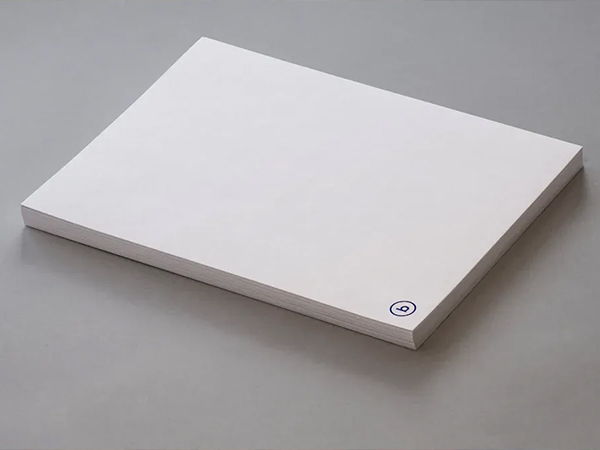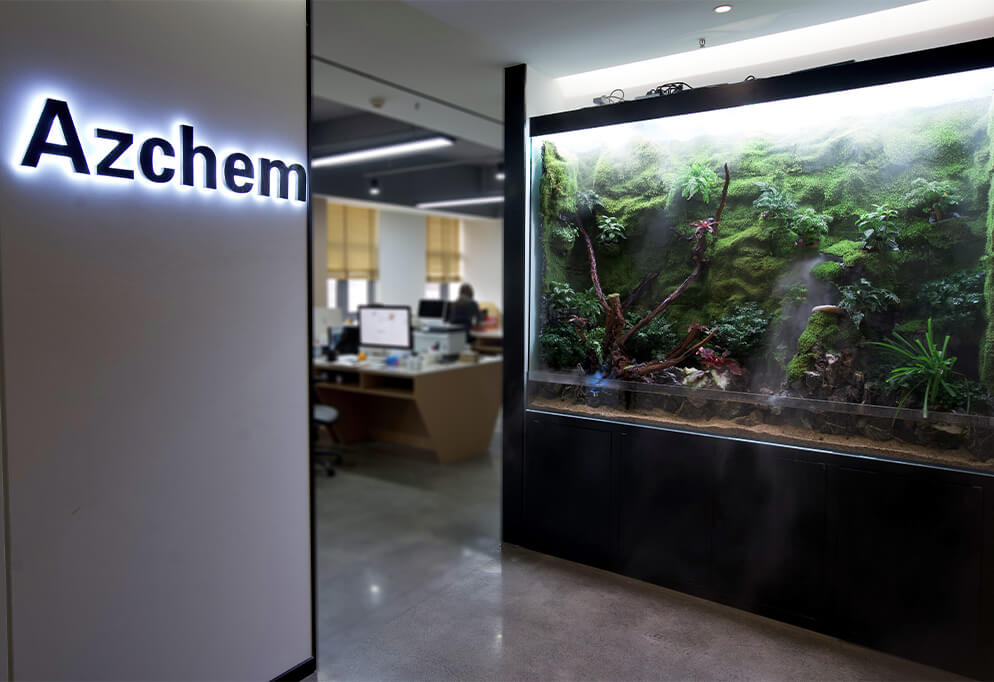
You face a critical choice in paper production: selecting the right sizing method depends on your mill’s goals and the types of paper you manufacture. Sizing directly impacts paper strength, water resistance, and print quality. Recent studies show that optimizing slurry solids concentration during grinding improves production efficiency and energy use. Both internal and surface sizing offer distinct advantages and challenges. Understanding these differences helps you achieve consistent results and meet demanding market standards.
Key Takeaways
- Sizing is crucial for controlling paper performance. It affects water resistance, strength, and print quality. Choose the right method to enhance your paper’s properties.
- Internal sizing improves water resistance throughout the sheet. It is added to the pulp before formation, ensuring consistent absorbency and durability.
- Surface sizing enhances printability and surface strength. Applied after sheet formation, it creates a barrier that improves ink holdout and reduces absorption.
- Consider your paper grade and end-use when selecting a sizing method. Different applications require different properties, so tailor your approach accordingly.
- Hybrid systems combining both internal and surface sizing can maximize benefits. This strategy allows for improved strength and print quality, meeting diverse market demands.
Introduction: Why Sizing Matters in Papermaking
The role of sizing in paper performance
You rely on sizing to control how your paper interacts with liquids and printing inks. Sizing agents modify the fiber network, improving absorbency, smoothness, and overall strength. When you select the right sizing method, you enhance the mechanical properties of your paper and ensure consistent print quality. Sizing materials form films on the surface and penetrate the fiber matrix, increasing interfiber bonding. This process boosts durability and printability, which are essential for high-performance papers.
Many common performance issues in paper stem from inadequate sizing.
- You may notice ink feathering when sizing is insufficient.
- Paper strength often suffers if the sizing level does not meet production standards.
- Concerns about the adequacy of sizing can affect your ability to deliver reliable products.
Surface Sizing plays a key role in water resistance and print sharpness. By forming a thin hydrophobic layer, it reduces ink bleeding and strengthens fiber bonding. You gain improved durability and sharper printing results.
| Sizing Method | Effect on Water Resistance | Additional Notes |
|---|---|---|
| Internal Sizing | Hinders water penetration and contributes to dimensional stability. | Does not make paper waterproof; used in various paper types. |
| Surface Sizing | Forms a hydrophobic layer that reduces liquid absorption, improving water resistance. | Applied to partially dried paper; enhances strength and prevents ink penetration. |
| Slack-Sized Paper | Minimal internal sizing; lower water resistance. | Used for papers that do not require high moisture resistance. |
| Hard-Sized Paper | Greater degree of internal sizing; higher water resistance. | Suitable for papers exposed to dampening systems in printing. |
| Testing Methods | Various tests measure water resistance, including surface absorption and penetration time. | Includes Feathering Test, Cobb Size Test, and others to assess sizing effectiveness. |
Growing demands for high-performance papers
You face increasing pressure to meet market demands for high-performance papers. Several trends drive this shift:
- Sustainability and eco-friendly materials have become priorities.
- Technological advancements in packaging require stronger, more versatile papers.
- Luxury goods and online retail consumption push for customized and durable packaging.
- The packaging sector now accounts for over half of global paper and board production.
- Sanitary goods and e-commerce industries demand biodegradable and recyclable paper solutions.
You must adapt your sizing strategy to keep pace with these changes. By choosing the right approach, you position your mill to deliver products that meet evolving industry standards and consumer preferences.
What Is Internal Sizing?
Overview and mechanism
You use internal sizing to control how your paper absorbs water and other liquids. This process starts early in papermaking, when you add sizing agents directly to the pulp slurry. These agents work by changing the surface chemistry of the cellulose fibers. Without sizing, water easily penetrates the paper because it forms hydrogen bonds with the exposed hydroxyl groups on the fibers. Sizing agents reduce the number of these groups and lower the surface energy, making the paper less absorbent.
Tip: Well-dispersed sizing agents with hydrophobic (water-repelling) groups, such as alkyl chains, give you the best results. You need these agents to stay active during papermaking and to anchor themselves to the fiber surfaces. When you dry the paper, the sizing agent should spread evenly at the molecular level, forming a protective barrier.
You want your internal sizing to:
- Improve water resistance and dimensional stability
- Enhance printability by preventing ink feathering
- Remain effective throughout the papermaking process
Common chemicals (AKD, ASA)
You often choose between two main chemicals for internal sizing: Alkyl Ketene Dimer (AKD) and Alkenyl Succinic Anhydride (ASA). Both offer strong hydrophobic properties, but they behave differently in your process.
| Chemical | Key Features | Environmental Considerations |
|---|---|---|
| AKD | Good retention, stable sizing, works well with neutral/alkaline papermaking | Vegetable oils can serve as a sustainable raw material. AKD vapors have minimal sizing effect, but their migration may impact the environment. Moisture affects AKD transport and efficiency. |
| ASA | High reactivity, fast sizing, suitable for high-speed machines | ASA can form stickies and has poor emulsion stability, which may create waste. Synthetic polymers can improve stability and reduce environmental impact. |
You can lower your environmental footprint by selecting vegetable oil-based sizing agents. Managing chemical distribution and stability also helps you minimize waste and improve sustainability.
What Is Surface Sizing?

Overview and mechanism
You apply Surface Sizing after the paper web forms, using a size press or similar equipment. This process coats the surface of the paper with a thin layer of sizing agent, which fills pores and capillaries. Unlike internal sizing, Surface Sizing does not chemically bond with the fibers. Instead, it creates a physical barrier that blocks water and ink from penetrating the sheet. You can adjust the amount and type of sizing agent to control the paper’s surface properties, such as smoothness and printability.
Surface Sizing gives you flexibility to enhance specific characteristics of your paper. You can target bulk properties or focus on the surface, depending on your production goals.
The following table highlights the differences between internal and Surface Sizing mechanisms:
| Aspect | Internal Sizing | Surface Sizing |
|---|---|---|
| Timing in Process | Added to pulp furnish before paper formation | Applied after paper web formation using a size press |
| Chemical Mechanism | Sizing agents chemically bond to fiber surfaces | Starch or other materials physically coat and fill surface pores |
| Physical Mechanism | Integrated into fiber matrix during sheet formation | Physically fills capillaries and pores on paper surface |
| Nature of Agents | Hydrophobic, reactive molecules | Non-hydrophobic, typically starch-based |
| Effect on Paper | Creates water resistance throughout the sheet | Modifies surface properties, can be adjusted for bulk or surface |
You can choose from several application methods for Surface Sizing:
- Brushing – Apply the size with a brush for even coverage.
- Spraying – Mix the sizing agent with water and spray onto the paper.
- Tub Sizing – Soak sheets in a tub of size, then press them for uniform absorption.
Surface sizing agents and applications
You have access to a range of Surface Sizing agents, each offering unique benefits for printability and water resistance. Modified starches remain the most common choice, but you can also use synthetic polymers for specialized needs. The table below summarizes the most effective agents and their benefits:
| Surface Sizing Agent | Application and Benefits |
|---|---|
| Modified Starches | Improved printability and water resistance |
| Styrene Maleic Anhydride (SMA) | Enhanced print quality, reduced water absorption |
| Styrene Acrylic Emulsion (SAE) | Increased water resistance, better surface properties |
| Alkyl Ketene Dimer (AKD) | Protective film, boosts durability and printability |
| Gelatin | Smoother surface, better print quality |
| Polyurethane (PUR) | Stronger water resistance, improved surface strength |
You use Surface Sizing agents to meet the demands of specialty paper grades. These agents help you:
- Provide water-resistance for various paper grades.
- Improve printability for offset, inkjet, and flexographic printing.
- Reduce ink penetration and enhance ink holdout for sharper images.
Surface Sizing agents play a crucial role in specialty papers by enhancing print quality and surface properties. You achieve sharper and more vibrant images, which is essential for high-quality magazines and brochures. You also improve the paper’s resistance to tearing and environmental moisture, increasing durability for packaging and premium products.
Key Differences Between Internal and Surface Sizing

Mechanism of action
You need to understand how each sizing method works to make the best choice for your mill. Internal sizing agents chemically bond to the cellulose fibers in the pulp. This process changes the fiber surface, making it less likely to absorb water. You get protection throughout the entire sheet. Surface Sizing, on the other hand, reinforces only the outer layer of the paper. The agent forms a thin film that fills surface pores and capillaries. This physical barrier improves water resistance and printability but does not penetrate the fiber matrix.
| Aspect | Internal Sizing Agents | Surface Sizing Agents |
|---|---|---|
| Mechanism | Chemical bonding to fibers | Physical surface reinforcement |
| Strength Impact | Enhances strength throughout | Improves surface strength only |
| Durability | High, covalent bonding | Moderate, limited to surface |
Tip: You achieve stronger, more durable paper with internal sizing, while Surface Sizing lets you fine-tune surface properties for specialty grades.
Application stage in papermaking
You apply internal sizing before the sheet forms, mixing the agent into the pulp. This early addition ensures even distribution and consistent performance. Surface Sizing comes later, after the paper web has formed and dried. You use a size press or similar equipment to coat the surface.
| Sizing Type | Application Stage |
|---|---|
| Internal Sizing | Before the sheet is formed (in pulp) |
| Surface Sizing | After the paper has been formed and dried |
- Internal sizing is added to the pulp before the sheet is made.
- Surface Sizing is applied after the paper has been formed and dried.
Performance outcomes (strength, water resistance, printability)
You see different results depending on the sizing method. Internal sizing increases mechanical strength and durability throughout the sheet. Your paper resists water and maintains dimensional stability. Surface Sizing improves surface strength, printability, and water resistance at the outer layer. You get sharper images and better ink holdout, which is ideal for high-quality printing.
| Aspect | Internal Sizing Agents | Surface Sizing Agents |
|---|---|---|
| Strength | High, throughout sheet | Moderate, at surface only |
| Water Resistance | Excellent, sheet-wide | Good, surface-focused |
| Printability | Prevents ink feathering | Enhances sharpness, ink holdout |
You should select the sizing method that matches your paper grade and end-use requirements. Internal sizing suits products needing high durability. Surface Sizing works best for papers demanding excellent print quality and surface finish.
Which Sizing Approach Should You Choose?
Factors to consider (paper grade, machine type, end-use)
You need to evaluate several factors before you select a sizing method for your paper mill. Start by considering the grade of paper you produce. Printing and writing papers often require high print quality and surface smoothness. Packaging grades demand strength and water resistance. You should also look at your machine type. High-speed machines may favor internal sizing because it integrates well with continuous processes. Older or slower machines might allow more flexibility for Surface Sizing.
End-use requirements play a major role. If your customers need paper that resists ink bleed and delivers sharp images, you should focus on surface treatments. For products exposed to moisture, such as food packaging or labels, internal sizing offers better protection. You can use this checklist to guide your decision:
- Identify your primary paper grades.
- Review your machine’s capabilities and limitations.
- Analyze customer requirements for printability, strength, and water resistance.
- Assess your mill’s ability to handle chemical storage and dosing.
Tip: You can consult with technical experts to match your sizing strategy to your production goals.
Hybrid systems and combined benefits
You do not have to choose only one approach. Many mills now use hybrid systems that combine internal and Surface Sizing. This strategy lets you balance sheet strength with surface properties. You gain the water resistance and durability of internal sizing, while also improving print quality and surface smoothness with a surface treatment.
Hybrid systems help you adapt to changing market demands. You can fine-tune your process for specialty papers or high-performance packaging. By combining both methods, you maximize flexibility and product quality.
Amazon Chemicals’ Sizing Solutions
Internal sizing agents (AKD, ASA)
You want reliable internal sizing agents to boost your paper’s water resistance and durability. Amazon Chemicals supplies Alkyl Ketene Dimer (AKD) and Alkenyl Succinic Anhydride (ASA) products that meet strict industry standards. You can select AKD for neutral or alkaline papermaking. AKD provides stable sizing and excellent retention. ASA works well for high-speed machines and delivers rapid sizing results. You gain flexibility to match your production needs.
Note: Amazon Chemicals tests every batch for purity and performance. You receive technical support to optimize dosing and application.
You benefit from these features:
- Consistent hydrophobicity for dimensional stability
- Fast curing for efficient production
- Compatibility with recycled fibers and specialty grades
| Agent | Best Use | Key Benefit | Support |
|---|---|---|---|
| AKD | Neutral/alkaline papers | Long-lasting sizing | Application guidance |
| ASA | High-speed machines | Quick sizing effect | Emulsion stability tips |
Surface sizing agents (cationic & anionic options)
You improve printability and surface strength with Amazon Chemicals’ Surface Sizing agents. You choose from cationic and anionic formulations to suit your paper grade. Cationic agents enhance ink adhesion and reduce dusting. Anionic agents boost water resistance and surface smoothness. You can tailor your Surface Sizing process for offset, inkjet, or specialty packaging.
Amazon Chemicals offers:
- Modified starch blends for high print quality
- Synthetic polymers for advanced water resistance
- Custom formulations for unique end-use requirements
Tip: You can request lab trials to test Surface Sizing agents on your machine before full-scale production.
You receive ongoing support for troubleshooting and process optimization. Amazon Chemicals helps you achieve consistent results and meet demanding customer specifications.
Finding the Right Sizing Strategy for Your Mill
Selecting the right sizing strategy shapes your paper’s performance and your mill’s reputation. You need to match your approach to your production goals, paper grades, and customer expectations. Start by reviewing your current paper grades and the demands of your end users. Each sizing method offers unique strengths, so you should weigh your options carefully.
Tip: You can boost your paper’s value by focusing on both internal and surface sizing. This dual approach lets you control water and pigment absorption, prevent blotting, and minimize buckling. You keep colors vibrant and ensure smooth application for printing and converting.
You should consider these expert recommendations when refining your sizing process:
- Internal sizing ensures consistent absorbency during pulp formation. You gain reliable water resistance throughout the sheet.
- Surface sizing agents improve water resistance and surface strength. You see better print quality and smoother machine runnability.
- Surface sizing supports the performance of packaging and cultural papers, helping you meet diverse market needs.
- Gelatin sizing offers excellent water control, though it comes from animal sources. Chemical starch provides a vegan alternative with similar effectiveness.
- External sizing gives you extra water control on the paper surface, which is vital for specialty grades.
You can use this checklist to guide your decision:
- Identify your main paper grades and their end-use requirements.
- Evaluate your machine’s capability for internal and surface sizing.
- Test different sizing agents, such as gelatin or chemical starch, to find the best fit.
- Monitor print quality, water resistance, and runnability after each change.
You position your mill for success when you align your sizing strategy with your production goals. By following expert advice and testing new solutions, you deliver paper that stands out in quality and performance.
- You see that internal sizing strengthens the entire sheet and boosts water resistance.
- Surface sizing improves printability and enhances surface properties.
- You must assess your paper grades, machine type, and customer needs before choosing a sizing strategy.
Ready to optimize your mill’s performance? Contact our experts for tailored advice and technical support. Your next step shapes your paper’s quality and market success.
FAQ
What is the main difference between internal and surface sizing?
You add internal sizing to the pulp before sheet formation. Surface sizing goes on after the sheet forms. Internal sizing protects the entire sheet. Surface sizing improves the outer layer’s printability and water resistance.
Can you use both sizing methods together?
Yes. You can combine internal and surface sizing for better results. This hybrid approach gives your paper both strong water resistance and excellent print quality. Many mills use both methods to meet demanding customer needs.
How do you choose the right sizing agent?
You should match the sizing agent to your paper grade, machine type, and end-use. For example, AKD works well for neutral papers. ASA suits high-speed machines. Surface sizing agents like modified starches improve printability.
Tip: Test different agents on your machine to find the best fit.
Does sizing affect paper recyclability?
Sizing can impact recyclability. You should select agents that disperse easily during repulping. Many modern sizing agents support recycling. Always check with your supplier for eco-friendly options.






